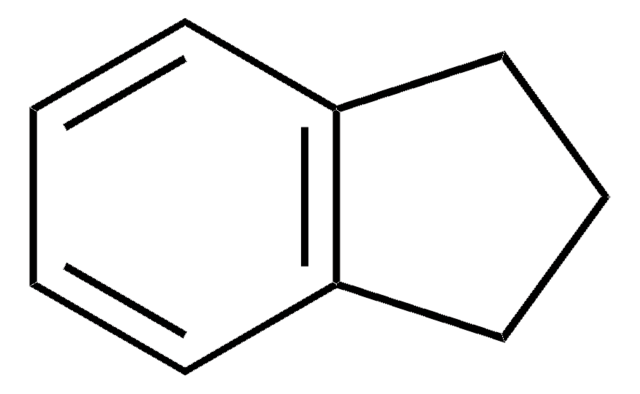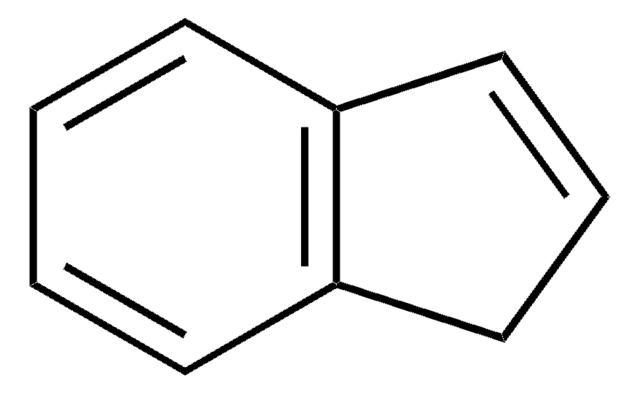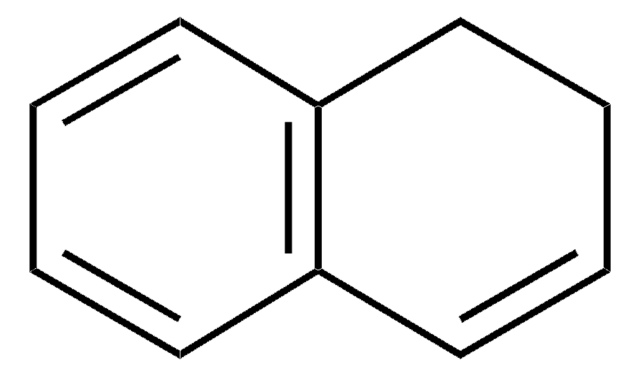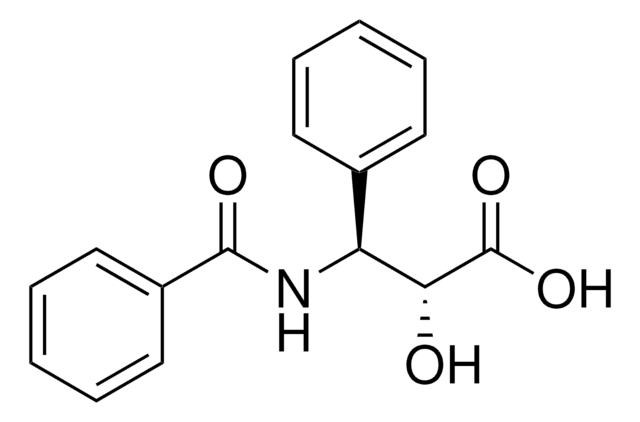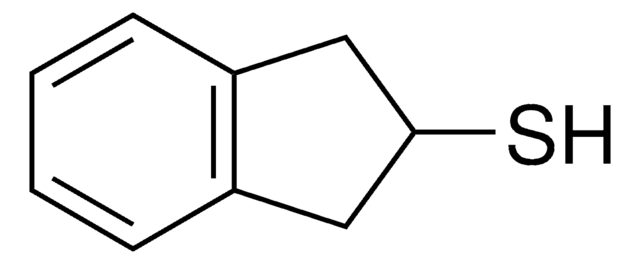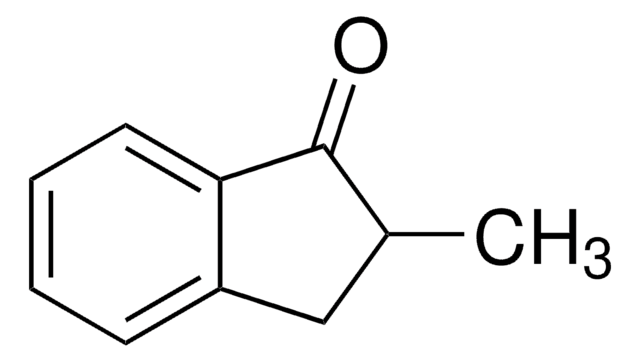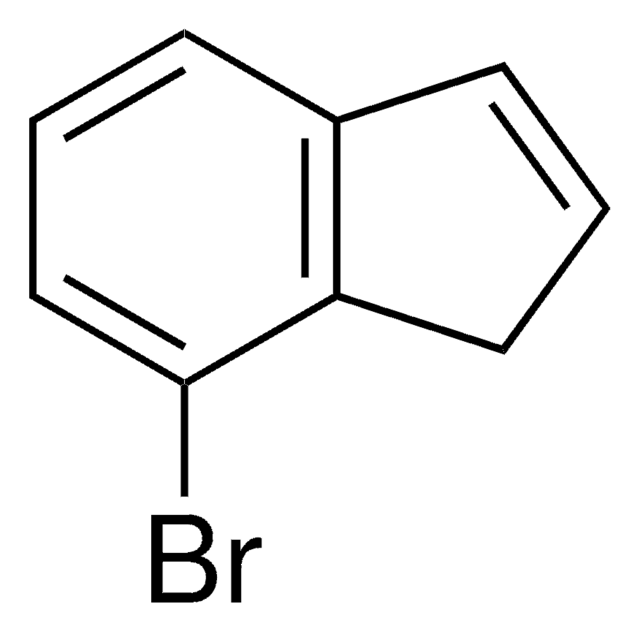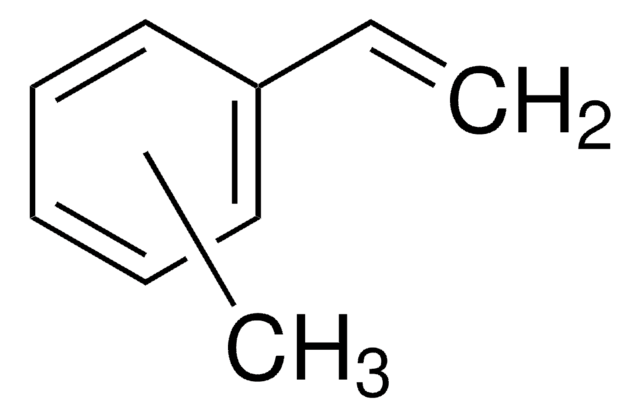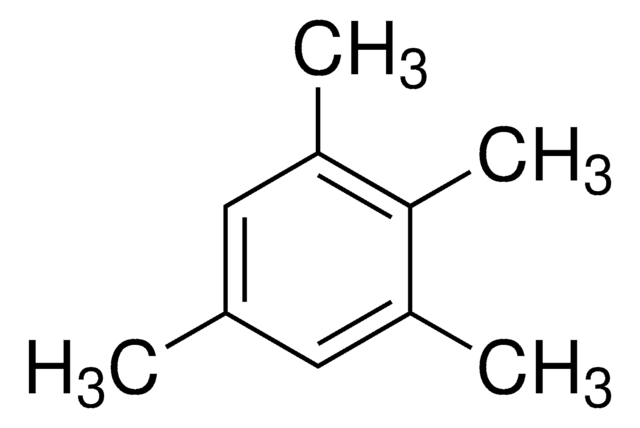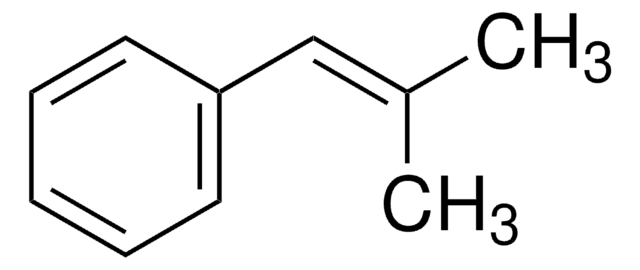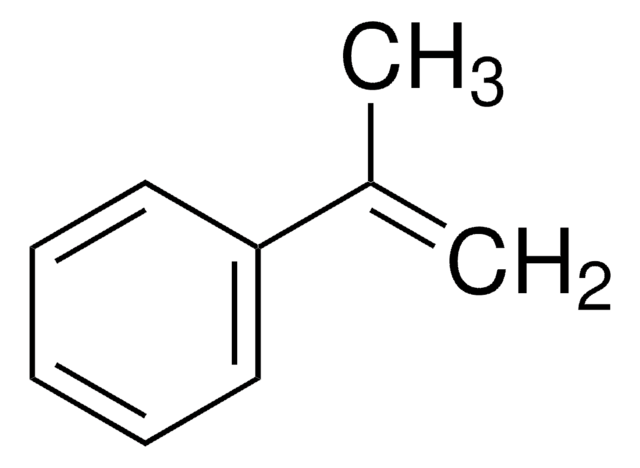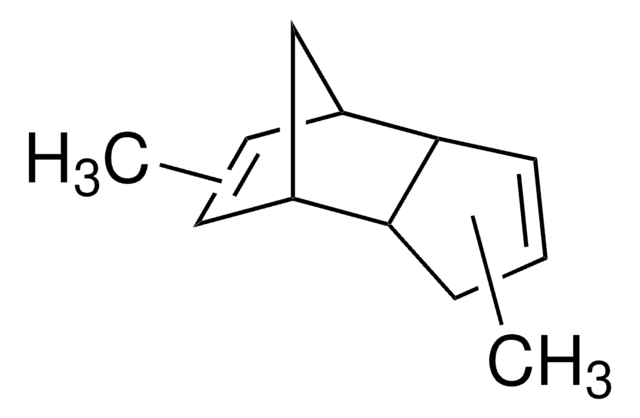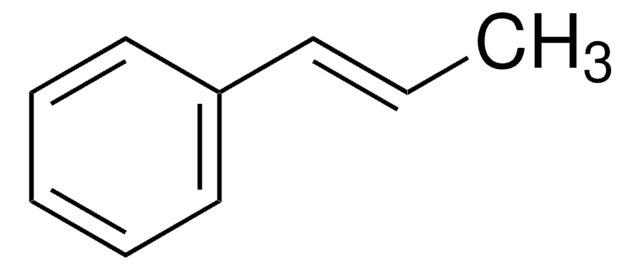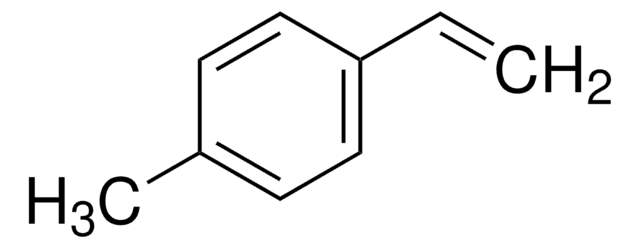449431
2-Methylindene
98%
Sinónimos:
2-Methyl-1H-indene
Iniciar sesiónpara Ver la Fijación de precios por contrato y de la organización
About This Item
Fórmula empírica (notación de Hill):
C10H10
Número de CAS:
Peso molecular:
130.19
MDL number:
UNSPSC Code:
12352100
PubChem Substance ID:
NACRES:
NA.22
Productos recomendados
Quality Level
assay
98%
refractive index
n20/D 1.567 (lit.)
bp
45 °C/0.2 mmHg (lit.)
density
0.971 g/mL at 25 °C (lit.)
SMILES string
CC1=Cc2ccccc2C1
InChI
1S/C10H10/c1-8-6-9-4-2-3-5-10(9)7-8/h2-6H,7H2,1H3
InChI key
YSAXEHWHSLANOM-UHFFFAOYSA-N
¿Está buscando productos similares? Visita Guía de comparación de productos
Storage Class
10 - Combustible liquids
wgk_germany
WGK 3
flash_point_f
168.8 °F - closed cup
flash_point_c
76 °C - closed cup
Elija entre una de las versiones más recientes:
¿Ya tiene este producto?
Encuentre la documentación para los productos que ha comprado recientemente en la Biblioteca de documentos.
Los clientes también vieron
I Ogawa et al.
Talanta, 28(10), 725-729 (1981-10-01)
The degradation of acenaphthylene, acenaphthene, 2-methylnaphthalene, 2-methylindene, 3-methylindene and indene in water solutions was studied. These compounds at the 25-150 mug/l. level were almost totally degraded at ambient temperature within three days. The microbial population responsible for the degradation occurs
Decomposition, isomerization, and ring expansion in 2-methylindene: Single-pulse shock tube and modeling study.
Lifshitz A, et al.
The Journal of Physical Chemistry A, 108(16), 3430-3438 (2004)
Antimicrobial effect of monomers and polymers with azole moieties.
Moon W-S, et al.
Journal of Applied Polymer Science, 90(11), 2933-2937 (2003)
Mike McD Francis et al.
Canadian journal of microbiology, 49(11), 699-706 (2004-01-22)
A purified microbial isolate, identified as a strain of Rhodococcus sp., metabolized indene primarily to iso quinoline and lesser amounts of indandiol and indanone. Isoquinoline production was dependent on the presence of microbial culture, indene, and ammonium ions as the
Long Zhao et al.
Nature communications, 10(1), 3689-3689 (2019-08-17)
Polycyclic aromatic hydrocarbons (PAHs) represent key molecular building blocks leading to carbonaceous nanoparticles identified in combustion systems and extraterrestrial environments. However, the understanding of their formation and growth in these high temperature environments has remained elusive. We present a mechanism
Nuestro equipo de científicos tiene experiencia en todas las áreas de investigación: Ciencias de la vida, Ciencia de los materiales, Síntesis química, Cromatografía, Analítica y muchas otras.
Póngase en contacto con el Servicio técnico